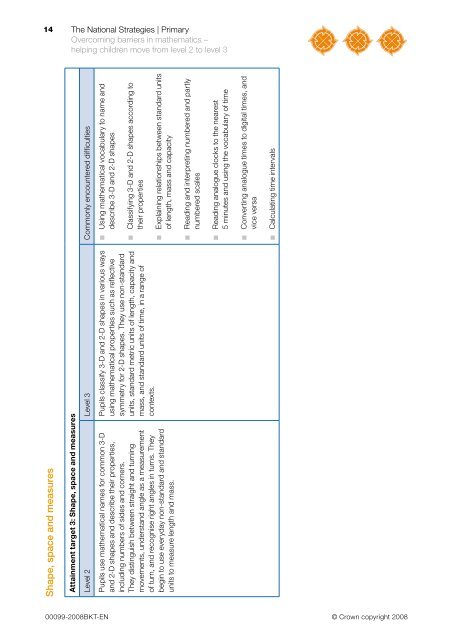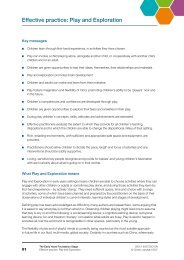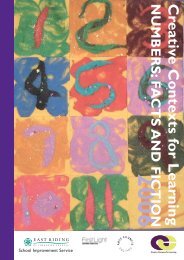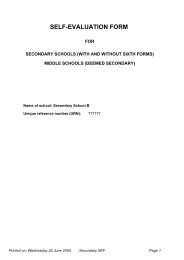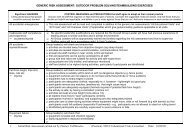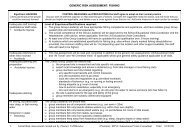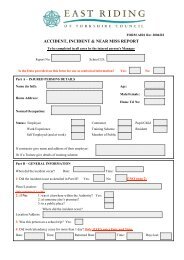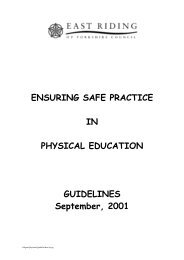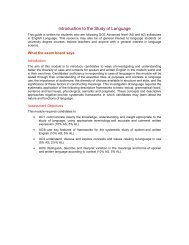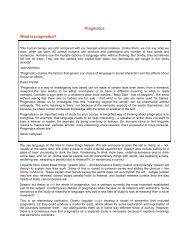Overcoming barriers in mathematics - helping children move from ...
Overcoming barriers in mathematics - helping children move from ...
Overcoming barriers in mathematics - helping children move from ...
Create successful ePaper yourself
Turn your PDF publications into a flip-book with our unique Google optimized e-Paper software.
14 The National Strategies | Primary<strong>Overcom<strong>in</strong>g</strong> <strong>barriers</strong> <strong>in</strong> <strong>mathematics</strong> –help<strong>in</strong>g <strong>children</strong> <strong>move</strong> <strong>from</strong> level 2 to level 3Shape, space and measuresAtta<strong>in</strong>ment target 3: Shape, space and measuresLevel 2 Level 3 Commonly encountered difficultiesPupils use mathematical names for common 3-Dand 2-D shapes and describe their properties,<strong>in</strong>clud<strong>in</strong>g numbers of sides and corners.They dist<strong>in</strong>guish between straight and turn<strong>in</strong>g<strong>move</strong>ments, understand angle as a measurementof turn, and recognise right angles <strong>in</strong> turns. Theybeg<strong>in</strong> to use everyday non-standard and standardunits to measure length and mass.Pupils classify 3-D and 2-D shapes <strong>in</strong> various waysus<strong>in</strong>g mathematical properties such as reflectivesymmetry for 2-D shapes. They use non-standardunits, standard metric units of length, capacity andmass, and standard units of time, <strong>in</strong> a range ofcontexts.■■■■■■Us<strong>in</strong>g mathematical vocabulary to name anddescribe 3-D and 2-D shapesClassify<strong>in</strong>g 3-D and 2-D shapes accord<strong>in</strong>g totheir propertiesExpla<strong>in</strong><strong>in</strong>g relationships between standard unitsof length, mass and capacity■■Read<strong>in</strong>g and <strong>in</strong>terpret<strong>in</strong>g numbered and partlynumbered scales■■Read<strong>in</strong>g analogue clocks to the nearest5 m<strong>in</strong>utes and us<strong>in</strong>g the vocabulary of time■■Convert<strong>in</strong>g analogue times to digital times, andvice versa■■Calculat<strong>in</strong>g time <strong>in</strong>tervals00099-2008BKT-EN© Crown copyright 2008


